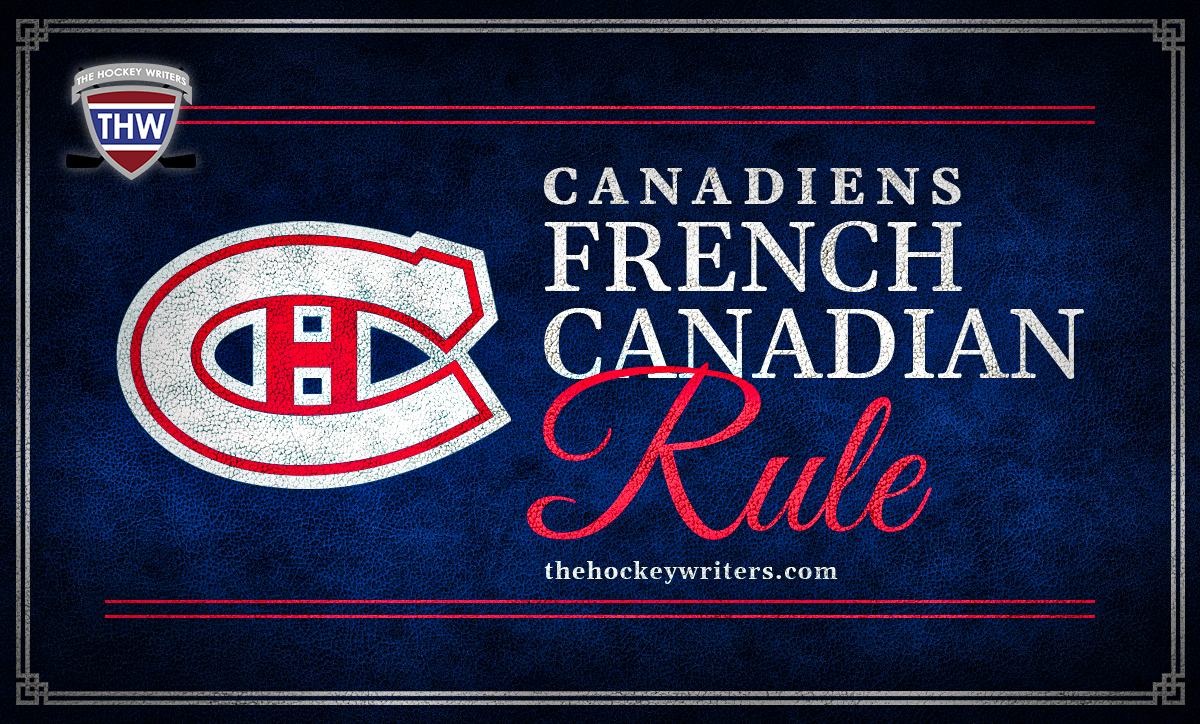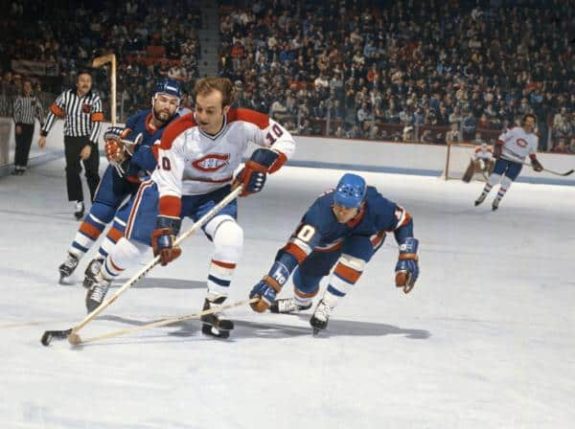For generations, the Habs have been dogged by accusations that their historic Stanley Cup success was because they had territorial rights to the best players French Canada had to offer. In this great article, originally published May 12, 2010, former THW contributor Mike Moore lays out why all those claims of an unfair advantage are wrong.
I’ve heard it more than once. You’ve probably heard it yourself, especially if you’re a fan of the Montreal Canadiens. Some misinformed anti-Habs fan usually brings it up. It’s a myth passed on from one generation to the next, an old wives’ tale stoked by jealousy or emotions even more sinister. You know where I’m headed — the Montreal Canadiens have won all of those Stanley Cups in their team history because the NHL traditionally gave them exclusive territorial rights to all French Canadian players. Ugh, such ignorant nonsense!
Throughout its history, the NHL has been governed by a President and board of governors whose best interest has always been equal and fair competition. Do you really believe the NHL could have survived over 90 years if one team had been given such an obviously huge and advantageous privilege?
Mr. Frank Selke and His Vision
Here’s what really happened. In 1946, Frank Selke became general manager of the Montreal Canadiens, a team nicknamed “The Flying Frenchmen” long before the formation of the National Hockey League. He was a man of extraordinary foresight and Mr. Selke had a vision.

He upgraded the Montreal Forum to attract more fans. More fans meant more revenue. With these additional funds, Selke started sponsoring minor and junior league teams across North America, especially in the province of Quebec. In turn, talented players from sponsored teams naturally migrated to the Canadiens if they were deemed to be NHL material. At one point, there were 10,000 players on 750 teams across the continent that were considered a part of the Canadiens farm system, a stable of future prospects larger than that of the five other NHL teams combined.
Most French Canadian players, especially those from Quebec, dreamed of one day dressing up for le bleu, blanc et rouge. However, there were plenty of exceptions. Hall-of-Famer Marcel Pronovost who hailed from Lac-de-Tortue, Quebec, was scouted by the Detroit Red Wings in the late 1940s and never played a game for the Montreal Canadiens in his long, illustrious career. He was never owned by the Canadiens’ organization in any way.
Same story for future Hall-of-Famers Rod Gilbert and his buddy Jean Ratelle. They were backwoods Quebecois who were scouted by a guy named Yvon Prud’homme of the New York Rangers and signed by New York in the mid-1950s. Ratelle couldn’t speak a word of English when he joined the Guelph Biltmores of the Rangers’ organization.
Hubert “Pit” Martin was another one. Unlike the rest of his family, Pit was a French Canadian Quebecer whose favorite team was the Red Wings, so he joined their organization. Martin would enjoy a long NHL career in the 1960s and ’70s and never played a single game for the Habs. There are many more examples of successful French Canadian players who were never Montreal Canadiens property under the old sponsorship system.
The “New NHL” of the 1960s
The hockey landscape changed in the 1960s with the gradual elimination of the sponsorship system. President Clarence Campbell had league expansion in the back of his mind and he envisioned a level playing field whereby all teams would have equal opportunity to recruit fresh young talent. Thus in 1963, the NHL conducted its first Amateur draft.
Needless to say, the draft was a brand new game with rules that required much refinement that evolved over several years. Only 21 players were selected in the first year, mainly because amateur players who were already on teams’ sponsorship lists were ineligible to be drafted. The Boston Bruins had finished last in the league in 1962 and were scheduled to draft first overall. For some reason, they chose to go third instead.
Having built an unequaled and powerful empire of feeder teams across North America, the Montreal Canadiens stood to lose the most by the institution of the new draft system. In recognition and as compensation, the NHL granted the Canadiens the choice of either drafting in turn with other teams or selecting the two French Canadian players of their choice before any other team drafted.
This may seem like an outrageously biased allowance, given the importance of the NHL’s Entry draft of today. How could they grant so much leverage to one team? But this was 1963, don’t forget — all of the valuable junior talent was already signed and wrapped up through sponsorship. There simply wasn’t much highly desirable talent left to be drafted. Nobody raised an eyebrow. In fact, the Canadiens didn’t even make use of their French Canadian privilege in the inaugural draft. Instead, they drafted Garry Monahan first overall, a young prospect from Barrie, Ontario right out of the backyard of the Toronto Maple Leafs.
Using the French Canadian Rule
For the first five years of the Amateur draft, from 1963 to 1967, the Canadiens never invoked their French Canadian option. In 1968, the Canadiens saw an opportunity and finally made use of their exclusive right for the first time. They selected goaltender Michel Plasse and a centreman from Montreal named Roger Belisle. Plasse played 32 games for the Habs as a backup goalie and was subsequently lost with no compensation in the 1974 Expansion Draft. Roger Belisle never played a game in the NHL.
You may also like:
- 3 Takeaways From the Canadiens’ 5-1 Win Over the Blue Jackets
- Canadiens Milestones: Jake Evans Scores His 100th NHL Point
- Canadiens Pull Away From Blue Jackets for 5-1 Win
- Projected Lineups for the Canadiens vs Blue Jackets – 11/16/24
- Lane Hutson Forcing Canadiens Front Office to Make a Decision on Mike Matheson
In 1969, the Canadiens used the French Canadian rule again to select Rejean Houle and Marc Tardif before the other teams drafted in regular order. Although both of these 1969 selections were serviceable NHL’ers, they were hardly the foundation of any future Habs dynasty. Both players were lost to the rival WHA after four seasons with Montreal.
Au Revoir to the Rule
By 1969, the old sponsorship system had been completely phased out. The NHL voted to eliminate the French Canadian rule, otherwise, the Habs would have been happy to take junior phenom Gilbert Perreault from Victoriaville, Quebec in 1970. Perreault went on to become the foundation of the early Buffalo Sabres’ success.
That’s it. From 1970 forward, the Canadians built their most successful teams the old-fashioned way, through wise trades and diligent draft picks. As the league expanded, the newer teams needed skilled players immediately. Still deeply stocked, the Canadiens could afford to give up serviceable players for future draft picks. Other Original Six teams had the same opportunity, but Habs’ general manager Sam Pollock was the master. That’s how he secured Guy Lafleur and other superstars the Canadiens’ of the 1970s employed while grabbing six more Stanley Cups.

The next time fans of a less successful team try to convince you that some unfair French Canadian advantage is the reason behind the 100-year and 24 Stanley Cup success story of Les Habitants, tell ‘em to do some homework and discover reality.

Comments are closed.